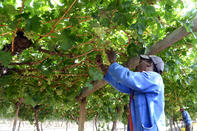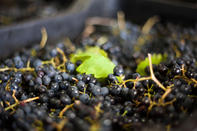Pioneers of Industry

You might not be super familiar with the term, but wine co-operatives are quite a big deal in South Africa. They date back to the early 20th century, when wine grape grower’s came together to support one another’s dreams of winemaking while staying afloat financially. Co-operatives, also known as producer wineries, play an important role in the local wine industry, supporting wine farmers and the production of quality vino.
For most of the 20th century, co-operatives defined the landscape of South African wine before moving into the back row to make way for enterprising wine estates and wineries with a knack for business. Notably, the government played a part in the sanctioning of co-op’s in the early years, which led to increased legislation and regulation within the industry. In more recent years, co-operatives have allowed smaller wine producers to compete in the highly saturated wine market of South Africa and abroad, giving a fair shot to all to make their mark in the industry.
Joint Venture
Essentially, a co-operative is a joint venture between wine grape growers and wine producers to make wine. Members can range from 5 to 100, depending on the size and capability of the production facility. Farmers deliver their grapes to the producer cellar, who in turn supplies its machinery to produce the vino. Other team members include a viticulturist, a cellar master and winemakers. The farmers form the board of directors, headed by a CEO if they are a private company, joined by a financial manager and director of marketing.
The system works to support all members of the co-op; it allows for economic stability and growth in an ever-changing market, and ensures that individual wine farmers have access to wine making opportunities. Co-ops have a lot of agency in terms of vino production: they can source their grapes from multiple wine regions in the country (wine estate’s are not allowed to) and they can produce in bulk, allowing for a larger quantity of wine to reach the market.
Rise of the KWV

The first co-operative was established to stabilize the fledgling wine industry in the 1920s. Wine farmers were battling economic stress, over-production and the imminent threat of civil war. In a nutshell, it was not a great time for wine production. With the vision of unifying the industry, attorney C.W.H. Kohler brought the concept of a co-operative to the newly formed Union of South Africa in 1918. The co-op would represent all the wine farmers of the country, their grapes and their production facilities. Thus the Koöperatieve Wijnbouwers Vereniging van Zuid-Afrika Bpkt (KWV) was founded. The KWV would take all surplus wine off the market while selling wine to merchants at a pre-negotiated minimum price.
The KWV grew exponentially in its first few years; wine farmers finally had a mouthpiece that could communicate their needs to government, while ensuring that they produce and sell quality wines. In 1924, the Act on Control and Spirits was accepted by the government, which put KWV in charge of governing the industry, as well as the distribution and export of wine and spirits. What started out as an attempt at unification turned into a huge organisation that still influences the wine industry today.
After the establishment of the KWV, the wine industry went on to improve drastically, producing better quality wines at adjusted prices that suited both the farmer and the buyer. In 1956, the organisation was responsible for setting quotas for grape production, determining the size of the annual crop and plantings and defining bulk wine prices. They were the central point from which wine and grapes could be produced. At one stage KWV controlled the majority of the wine business, which amounted to about 70% of exports with roughly 5000 members.
In the early 1990s, however, the quota system was abolished and the free market took over in the wine industry. Farmers were now allowed to determine the price of their wine, as well as grape distribution. In 2002, KWV transformed from its co-operative status to a company, now known as KWV Ltd. This gave the wine industry’s members much-needed breathing space, leading to more individual endeavors and enterprises. The KWV now competes against the producers it once governed and protected in the free market.
Throughout the years, the industry has seen several co-operatives come and go; with the expansion of the winelands, the Wine of Origin scheme and the arrival of various newcomer producers, the role of a co-op has never been more prevalent.
Trustworthy Brands
Producer wineries have become key players in both the local and global wine industry. In a competitive market, they provide stability for smaller producers who want to take part in the wine making business, but need reinforcement. Although co-ops are often recognised for the quantity and not quality, but this will change with modern innovation and the fusion of traditional and New World wine making.
There are a few such wineries that have created visible and trustworthy brands in the local industry; Robertson Winery is one such example, as well as Darling Wine Cellar in the Swartland area and Distell in Stellenbosch. The KWV still reigns supreme in Paarl, although they are now a private company. Orange River Wine Cellars has allowed for wine farmers from the Northern Cape to enter the wine market, while Stellenbosch Farmers' Winery is one of the largest and most successful co-ops in the area.